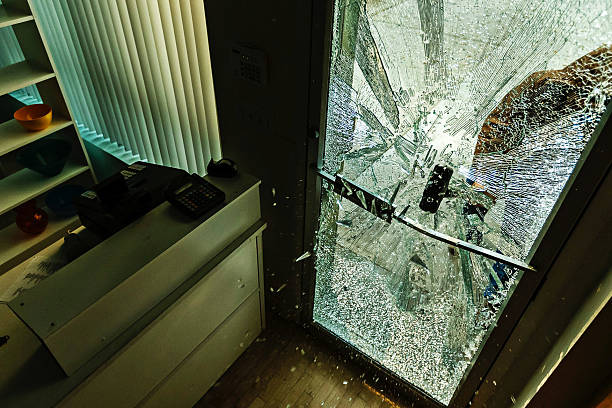California Vandalism Laws Explained: Protecting Your Property

California vandalism laws are designed to protect both public and private properties from intentional damage and defacement. If you’re here to quickly understand the basics, vandalism in California is defined as maliciously defacing, damaging, or destroying property that does not belong to you.
Key Points:
- Vandalism defined: Intentional damage or defacement of someone else’s property
- Examples include: Graffiti, breaking windows, damaging vehicles
- Penalties: Vary from misdemeanors to felonies, including fines and possible jail time
Vandalism is more than just spraying graffiti on walls. It includes a wide range of activities, from carving your initials into a park bench to keying a car. The law focuses on the intentional aspect of the act, the physical damage caused, and the ownership of the property. Whether it’s a minor offense or a serious crime, the consequences can be severe if convicted.
I’m Adam Jackson, and I specialize in criminal defense with a focus on California vandalism laws. Throughout my career, I’ve handled various cases, including many related to vandalism, and have a deep understanding of the local legal landscape. I’m here to help you steer these complex laws and protect your rights.

Stay tuned as we dive deeper into what constitutes vandalism, the types, penalties, and the defenses available to protect yourself legally.
What Constitutes Vandalism in California?
In California, vandalism is not just about graffiti. It covers a wide range of actions that lead to the destruction or defacement of property. According to California Penal Code 594(a), vandalism occurs when someone maliciouslydamages, defaces, or destroys any property that does not belong to them.
Types of Vandalism
Vandalism can take many forms. Here are some common types:
- Graffiti: This involves painting, drawing, or etching on surfaces without permission. Graffiti is often seen on public buildings, bridges, and even private property. It’s one of the most visible forms of vandalism.
- Trash Dumping: Illegally dumping garbage or waste on someone else’s property can also be considered vandalism.
- Light Smashing: Breaking streetlights, car headlights, or other types of lighting fixtures is another form of vandalism.
- Breaking Windows: Whether it’s a car, house, or store window, breaking glass is a common vandalism act.
- Defacing Property: This includes carving into park benches, scratching cars, or damaging signs and fixtures.
Examples of Vandalism
Let’s look at some real-life scenarios to understand how vandalism plays out:
- Graffiti on Buildings: Imagine waking up to find your store’s facade covered in spray paint. This isn’t just an eyesore; it’s a violation of California vandalism laws.
- Smashing Car Windows: Picture returning to your parked car to find the windows shattered. This kind of property damage can be costly and inconvenient.
- Defacing Public Property: Carving initials into a park bench or scratching a message onto a bathroom stall door is also vandalism. These actions may seem minor but can lead to serious legal consequences.
Malicious Intent
One key element in vandalism cases is malicious intent. For an act to qualify as vandalism under California law, it must be done intentionally and with malice. This means the person must have intended to cause damage or defacement. Accidental damage, no matter how severe, does not count as vandalism.
Understanding the different forms and examples of vandalism can help you identify and prevent these actions, whether you’re a property owner or someone accused of vandalism. Next, we’ll dive into the penalties associated with vandalism and what you can expect if you’re charged.
California Penal Code Section 594: Key Elements
Penalties for Vandalism
Vandalism under California Penal Code Section 594 can lead to serious consequences. The penalties depend on the extent of the damage and whether the act is classified as a misdemeanor or a felony.
Misdemeanor Vandalism
- Damage under $400: If the damage is less than $400, the offense is considered a misdemeanor. Penalties can include:
- Up to 1 year in county jail
- Fines up to $1,000
- Community service
- Restitution to the property owner
Felony Vandalism
- Damage $400 or more: When the damage is $400 or more, the crime can be charged as a felony. This can lead to:
- 16 months, 2 years, or 3 years in state prison
- Fines up to $10,000 (or up to $50,000 if the damage exceeds $10,000)
- Community service
- Restitution to the property owner
Additional Penalties
- Repeat Offenders: If you have two prior convictions for vandalism, a third conviction will result in mandatory jail or prison time.
- Graffiti: Special penalties apply if the vandalism involves graffiti, including potential requirements to clean up or repair the damaged property.
Statute of Limitations
The statute of limitations for vandalism in California depends on whether the offense is charged as a misdemeanor or a felony.
Misdemeanor Vandalism
- Three Years: The statute of limitations for misdemeanor vandalism is three years. This means charges must be filed within three years of the date of the vandalism.
Felony Vandalism
- Three Years: The statute of limitations for felony vandalism is also three years. However, the severity of the crime can sometimes extend this period, especially if it involves fraud or other complicating factors.
Understanding the penalties and statute of limitations for vandalism can help you steer the legal system more effectively. Whether you’re a property owner looking to protect your assets or someone facing charges, knowing your rights and responsibilities is crucial.
For expert legal representation and to discuss your case, contact Inland Empire Criminal Defense.
Defenses Against Vandalism Charges
Legal Representation
If you’re facing vandalism charges, understanding the defenses that might be available to you is crucial. Here are some common defenses:
Accident Defense
Accidental damage to property is not considered vandalism. For example, if you unintentionally broke a window while playing catch, this would not be classified as vandalism. The key element here is the lack of malicious intent.
False Accusations
Sometimes, people are falsely accused of vandalism. Maybe someone else committed the act, or perhaps there was a misunderstanding. An experienced attorney can help gather evidence to prove your innocence.
Lack of Malicious Intent
To be convicted of vandalism, the prosecution must prove that the act was committed with malicious intent. This means the damage was done on purpose. If you can show that the damage was accidental or unintentional, you may have a strong defense.
Importance of an Attorney
Having a skilled attorney is crucial when facing vandalism charges. Here’s why:
Early Intervention
Early intervention by a knowledgeable attorney can sometimes result in reduced charges or even a complete dismissal. For instance, early involvement can sometimes lead to a reduction or rejection of criminal charges.
Case Reduction
A good attorney will work hard to get the best possible outcome for your case. This might mean reducing a felony charge to a misdemeanor or negotiating a lesser penalty.
For expert legal representation, contact Inland Empire Criminal Defense.
Vandalism and Insurance
When it comes to protecting your property from vandalism, understanding how insurance works is crucial. Homeowners insurance often covers damages caused by vandalism, but there are some important details to know.
Vandalism and Malicious Mischief Insurance
Vandalism and malicious mischief insurance is a type of coverage that protects against losses caused by intentional damage to your property. This coverage is typically included in most basic homeowners and commercial insurance policies.
Homeowners Insurance and Vandalism Claims
Homeowners insurance usually covers the cost of repairing or replacing damaged property due to vandalism. For instance, if someone spray-paints graffiti on your garage door or breaks your windows, your policy can help cover the repair costs.
However, there are some limitations:
- Vacant Properties: If your home has been vacant for more than 60 days, vandalism coverage may not apply.
- Personal Responsibility: Damage caused by someone named on your policy (like an ex-partner who hasn’t been removed from the policy) is typically not covered.
Coverage Details
The specifics of your vandalism coverage can vary. Here’s what you should look for:
- Property Damage: This includes damage to the structure of your home, such as walls, windows, and doors.
- Personal Property: Items inside your home, like furniture, electronics, and personal belongings, are also covered if they are vandalized.
- Premises Responsibility: If the vandalism occurs on your property but affects items you are responsible for, such as a tenant’s belongings, your insurance may cover those damages as well.
Filing a Vandalism Claim
If your property is vandalized, take these steps to file a claim:
- Document the Damage: Take photos and make a list of all damaged items.
- File a Police Report: This is often required by insurance companies to process your claim.
- Contact Your Insurance Company: Provide them with the documentation and police report to start your claim.
Real-Life Example
Imagine your neighbor’s child throws a rock through your living room window, breaking it. Your homeowners insurance would likely cover the cost to replace the window. However, if the same child is listed on your policy, the damage might not be covered.
For more detailed information on how vandalism insurance works and what it covers, visit the California Department of Insurance website.
Next, we’ll dive into Frequently Asked Questions about California Vandalism Laws, where we’ll address common queries about what constitutes vandalism and its legal implications.
Frequently Asked Questions about California Vandalism Laws
Is vandalism a crime in California?
Yes, vandalism is a crime in California. The severity of the crime can vary. It can be charged as either a misdemeanor or a felony, depending on the extent of the property damage and other factors like gang involvement or hate crime elements.
Misdemeanor vandalism usually involves property damage that is less than $400. Penalties can include up to 1 year in county jail and fines up to $1,000.
Felony vandalism typically involves damage exceeding $400. Penalties can be more severe, including up to 1 year in county jail, fines up to $10,000, or even higher if the damage is extensive.
What is considered an act of vandalism?
An act of vandalism involves maliciously defacing, damaging, or destroying someone else’s property. This includes a wide range of activities, such as:
- Graffiti: Spray painting walls, buildings, or other surfaces.
- Tagging: Writing or drawing on property without permission.
- Etching: Scratching surfaces like glass or metal.
- Stickers and Posters: Placing adhesive materials on property without consent.
These acts are considered vandalism under California Penal Code Section 594 because they deface or damage property.
What are the different types of vandalism?
Vandalism can take many forms. Here are some common types:
- Graffiti: This is the most commonly thought-of type of vandalism. It involves using spray paint or markers to write or draw on walls and other surfaces.
- Trash Dumping: Illegally disposing of garbage on someone else’s property.
- Light Smashing: Breaking street lights or other public lighting fixtures.
- Breaking Windows: Throwing objects to shatter windows of cars, homes, or buildings.
Each of these acts can lead to criminal charges and serious consequences. Understanding the types of vandalism can help you recognize and prevent it.
For more detailed information on California vandalism laws or for expert legal representation, contact Inland Empire Criminal Defense. Our experienced attorneys can help you steer through the complexities of vandalism charges.
Conclusion
At Inland Empire Criminal Defense, we understand how overwhelming vandalism charges can be. The legal implications are serious and can impact your future. Our team of experienced attorneys is here to help.
We specialize in defending against vandalism charges. Our attorneys know the ins and outs of California vandalism laws and can provide you with the best defense strategy.
Early intervention is key. By contacting us as soon as possible, we can work to reduce or even dismiss your charges before they escalate.
We offer free consultations to discuss your case and explore your options. This is your opportunity to get expert advice without any financial commitment.
Don’t wait. If you or a loved one is facing vandalism charges, contact Inland Empire Criminal Defense.
For more information, visit our website. Let us help you protect your rights and your future.
Frequently Asked Questions
Absolutely, Inland Empire Criminal Defense prioritizes your privacy and confidentiality. Every consultation with our attorney is conducted with the utmost discretion, ensuring your information remains secure and private.
Yes, understanding the financial pressures that can come with legal representation, our attorney offers flexible payment plans. This approach ensures that quality legal defense is accessible for all our clients in Riverside, San Bernardino, and Los Angeles Counties.
Yes, Inland Empire Criminal Defense offers free consultations. This is part of our commitment to providing accessible and transparent legal services to residents of Riverside, San Bernardino, and Los Angeles Counties.
We offer both in-person and over-the-phone consultations to accommodate your preferences and needs. Whether you’re in Riverside, San Bernardino, or Los Angeles County, we ensure that you can access our legal services in the way that suits you best.
Our office is typically closed on weekends. However, we do make exceptions for meetings by special arrangement. Our commitment is to be as accommodating as possible to meet the unique needs of our clients in Riverside, San Bernardino, and Los Angeles Counties.
Our legal services are specifically tailored to residents of Riverside, San Bernardino, and Los Angeles Counties. For cases outside these areas, we recommend consulting avvo.com to find appropriate legal assistance. Our focused approach allows us to provide specialized defense catering to the unique legal landscape of these counties.



